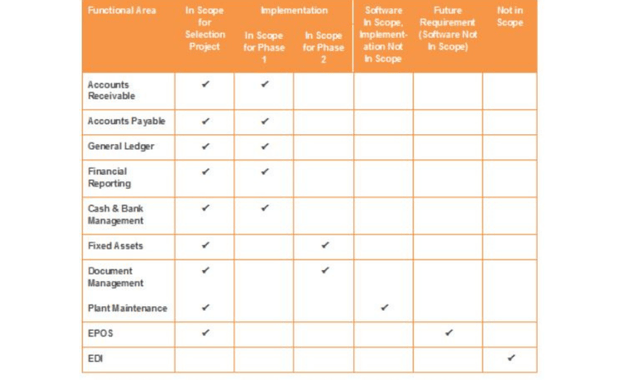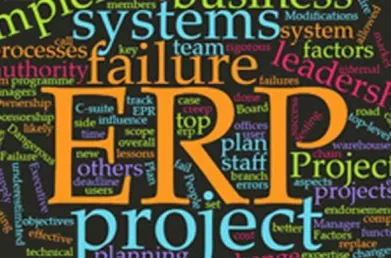Defining Scope During an ERP Selection Project
It is natural for an ERP selection project to include an assessment of functionality that a business may need at some point in the future, but real decisions around software and ERP project scope are required before signing the contract with the ERP vendor. Clarity around the scope is important right from the start.
Looking to the future in ERP selection projects
Virtually every ERP selection project considers functionality that might be required in the future. Deciding which ERP system best suits your organisation means assessing both the functionality you need now as well as the functionality that may be required in the medium to long term. It’s prudent to think strategically and find the solution that will support the business as it grows or diversifies, and to think ahead in relation to legacy systems that will need to be replaced sooner or later.
All of this helps inform the selection decision: “Which system is best for this business?” Towards the end of the selection process the focus changes, and attention must turn to questions such as: “What software modules are we going to buy?”, “What functionality are we going to implement?”, and “How will the implementation be structured or phased?” It will prove impossible to agree a contract with an ERP vendor without answers to these questions.
Deciding on the software and implementation for the ERP project scope
The initial draft of the ERP project scope should happen at the beginning of the selection project. Even if the detail needs more thought (and that’s usually the case), it’s important to have a realistic plan in mind so that prospective vendors can work out their costs and you can assess their proposals on a like-for-like basis.
A useful technique for managing scope during a selection project is to document:
- what is in scope for the selection project,
- what is in scope for each phase of the implementation,
- what software you plan to buy now, but isn’t included as part of the initial implementation plan,
- what is a future requirement (i.e., you’re going to look at it during the selection project, but you don’t intend to buy the software or implement it now), and
- what is not in scope.
In its simplest form this can be documented by functional area, but more complex scenarios may require analysis of phasing by business unit, site or country.
In the example shown below, the first four modules are included in the selection project and are to be implemented in phase 1 of the implementation. The next two modules are included in the selection project and are to be implemented in phase 2 of the implementation. Plant Maintenance will be covered as part of the selection project, but while it’s expected that the software to support Plant Maintenance will be purchased there’s no plan to implement it in phases 1 or 2. EPOS is a possible future requirement, so while it will be covered as part of the selection project there’s no plan to buy the software at this time. Finally, EDI is not in scope for any part of the project.

The BAFO process
Lumenia’s ERP selection methodology includes a Best and Final Offer (BAFO) stage just before the final decision is made. The purpose of the BAFO stage is to allow vendors to submit a final proposal based on an agreed understanding of project scope, solution landscape, implementation approach and timescales. It also provides a forum to allow the two vendors that have made the final shortlist to meet with the client in a workshop environment so that they can ask any questions they may have. Finally, it allows each vendor to present the actual implementation team they are proposing.
This is a critical stage in the selection process, as it marks the point at which theoretical options start to be replaced by firm decisions. The conversation changes in tone, as the reality of the imminent implementation project looms and the prospect of making choices on the software and project scope must be faced.
An evolving picture
As the selection project progresses, it is common to find stronger opinions beginning to form around what should be in or out of scope, and for the original plan to change to some degree. Using the techniques described here ensures everyone is clear throughout on the ERP project scope of the selection project and how it relates to the proposed ERP implementation.
This blog was written by John Donagher, Managing Partner at Lumenia. If you would like further information on ERP Selection please send an e-mail to John Donagher.


